Kochi: Mohanlal, in a dual-tone pink denim jacket, smiles at commuters from Kochi’s metro pillars. A few metres down the road, Dulquer Salmaan jumps for joy in a bright blue hoodie and sweatpants. Go further ahead, and Fahad Faasil and Nazriya Nazim seductively stare at you in an all-red ensemble. Then there’s Samantha Ruth Prabhu in a white top standing in front of a sunny yellow background. All these stars want to sell you one thing—Kerala’s homegrown ice cream.
Home to less than three per cent of India’s population, Kerala is the fastest-growing carry-home-pack market of ice creams and has the second-highest per capita consumption of ice creams followed by Gujarat, say industry insiders.
And there is a lot happening— from family feuds and court battles, to the development of the world’s first dedicated ice-cream delivery app, a gelateria, Milano, set up by an Italian couple, micro-businesses by village-level cooperatives, and artisanal brands such as Shwey’s making ice cream from candied bacon and smoked beef tallow. With over 100 regional brands, the state’s ice cream market has grown by Rs 200 crore in the last year and is set to cross Rs 1,000 crore in 2024. Regional brands account for 80 per cent of that number.
Kerala’s market is led by four brands—Skei, Lazza, Camerry, and Merceley’s. They have a combined market share of around 75 per cent. Other major players are the state government-owned Milma, Uncle John, Vesta, Pappai and Sonata.
“Compared to any other FMCGs (Fast-Moving Consumer Goods), the profit is high in ice creams. This means you can give a higher margin to distributors as well,” said Libin K of the Hygiene food tech consultants. He works with those who want to set up food-related businesses.
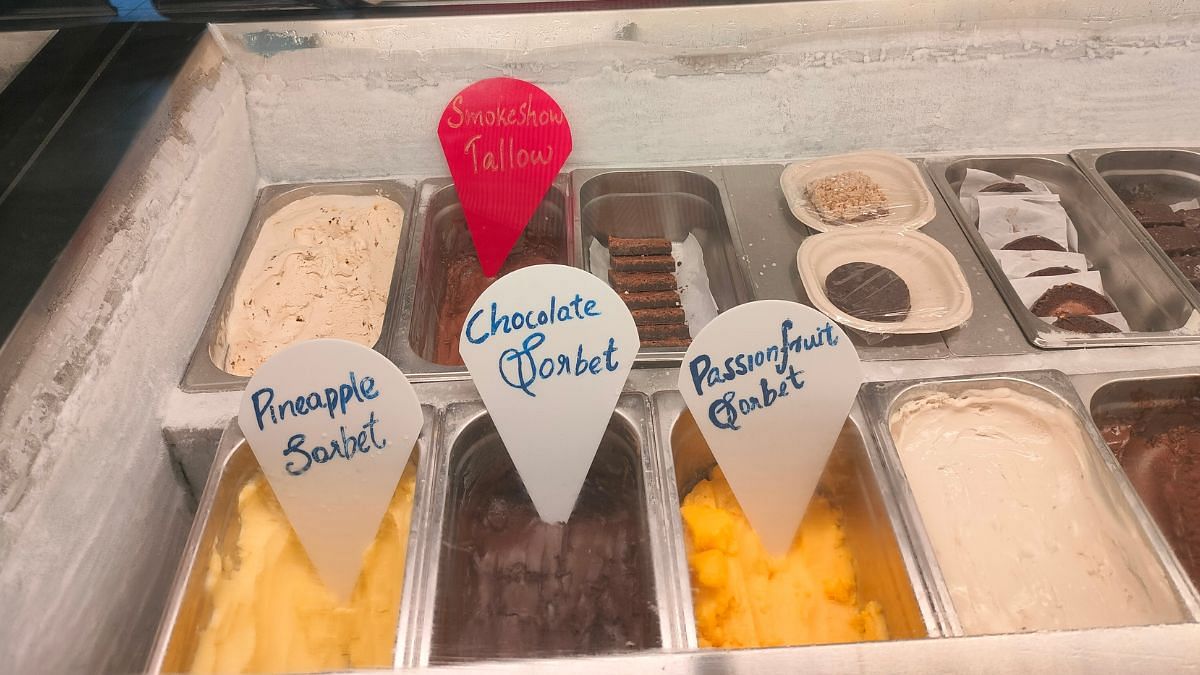
It helps that Kerala’s population density per square kilometre, purchasing power and quality awareness among consumers are on par with major metropolitan markets in the country.
“The ice cream industry witnessing large investment in the branding, marketing and sales infrastructure and technology side, and the market shows a growing trend for the past decade,” said Hashim Basheer, lead consultant at Wide Verticals Business Consultants. He was the Director and COO of Lazza from 2016 to 2023, and has been associated with its parent company since 1999.
Also read: People who use food to show off imagined moral superiority aren’t just wrong but also idiots
Ad wars
It’s raining. Mohanlal and his co-star share a tub of Alphonso Mango ice cream. In a seductive voiceover, he talks about wanting to have ice cream with his lover during heavy rains. The ad by Kiwi, an ice cream brand from Malappuram which began in 2011, was aimed at normalising ice cream consumption during the state’s two monsoons—an almost six-month off-season for sales.
In the past five years, more brands have sprung up in the state and the investment in branding and marketing has shot up.
“Mohanlal’s endorsement has helped us reach premium outlets and tap into new markets,” said Ameen Ansari, the Managing Director of Kiwi in an interview with Media4news earlier this year.
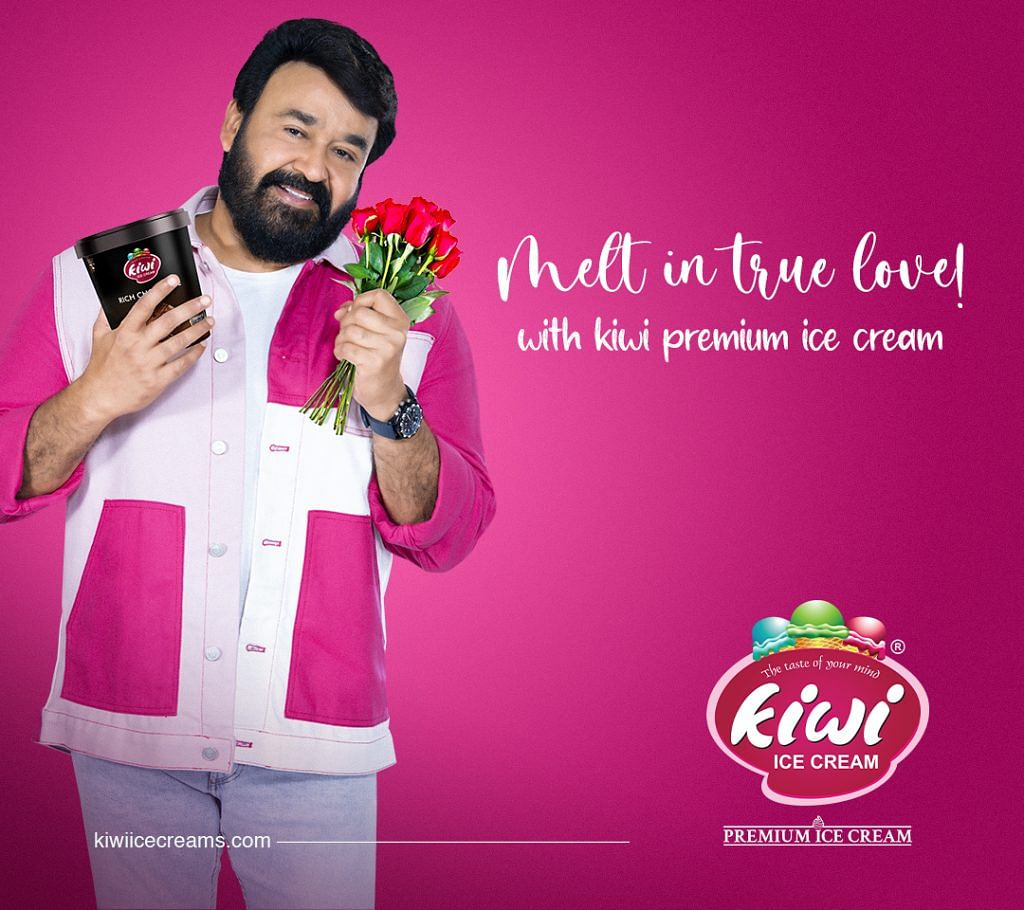
This advertising revolution was started by Merriboy. Launched in 2003 by Cousins Group, a business venture by five close-knit families from Ernakulam’s Perumbavoor, it took them 10 years to disrupt the market.
In 2013, Meriiboy signed a contract with actor Manju Warrier as its brand ambassador. It was timed perfectly with the 90s icon’s much-anticipated comeback to cinema after 15 years.
It launched multiple ads with the taglines—‘The real ice creams’, ‘Indulge in quality,’ ‘Natural aanu nallath’ (natural is better). It squarely placed the focus on the quality of the product. The ads emphasised that the state was, up until then, consuming “frozen desserts” not “real ice cream”. Ice cream is made of milk solids or fats, whereas frozen desserts use vegetable oil.
It was a subtle dig at Skei, Lazza and Uncle John—all owned by Kreem Foods. The three dominated the market until Meriiboy began the ad war.
The brand also justified its higher price in 2015 with an ad featuring Warrier.
The actor is at a wedding where the guests are hesitant to eat the ice cream. But when the non-branded ice cream cups change to Meriiboy, they can’t get enough. The change is signalled by a voice-over—‘Vila mahram noki madhuram vilambiyal chilapol vila povum,’(If you serve ice creams solely based on price, your value will be diminished).
Compared to any other FMCGs (Fast-Moving Consumer Goods), the profit is high in ice creams.
– Libin K, Hygiene food tech consultants
“In other states, there are not as many TV ads for ice creams. In Kerala, there is fierce competition because of the ads, which is boosting the market,” said Rijo Cletus, one of the founders of the Kochi-based frozen food distribution company Lera Marketing. The company distributes Skei ice creams.
“We have had customers coming in asking for ice creams featuring Mohanlal,” he added.
Siddique AV, the President of the Ice Cream Manufacturers Association in the state added that the split in major players led to the emergence of newer companies.
The Meriiboy cousins split in 2022. The result was two new brands—Mercely’s and Camerry—and three new celebrities—Dulquer Salmaan, Fahadh Faasil and Nazriya Nazim—selling ice cream
“Many (companies) are falling off because of the need to do marketing. In our case too, being the largest player, we didn’t do ads for a while. We were forced to,” said John Francis, director of Skei group adding that the distributors were pressuring the company to do ads.
With the tagline ‘Love has many flavours’, Camerry used Fahadh and Nazriya to shoot sensual minute-and-a-half-long videos. The three ads released since September 2022 have over 20 million views across Instagram and YouTube.

Mercely’s, too, focused on love, using Dulquer to promote “healthy ice creams for healthy relationships”. While the TVC didn’t have as much of an impact, the more rational posters of the actor in bright streetwear promoting the ‘prebiotic and probiotic’ ice cream were so ubiquitous that the brand became instantly recognisable.
“Now, everyone has to do ads. It doesn’t matter if you have the money to do it or not,” Francis said. Skei roped in actress Samantha Ruth Prabhu in 2023. Lazza is endorsed by actor Trisha Krishnan, and Vesta, another ice cream brand headquartered in Thrissur, features actor Kalyani Priyadarshan.
We have had customers coming in asking for ice creams featuring Mohanlal
– Rijo Cletus, co-founder, Lera Marketing
And it’s not just ads, older brands have been forced to revamp their branding. Peni Ice Candy, a popsicle company founded in 1997 in Kottayam, rebranded in 2021. Kochi-based Caravan Ice Creams rebranded in 2023, after almost 40 years in the business.
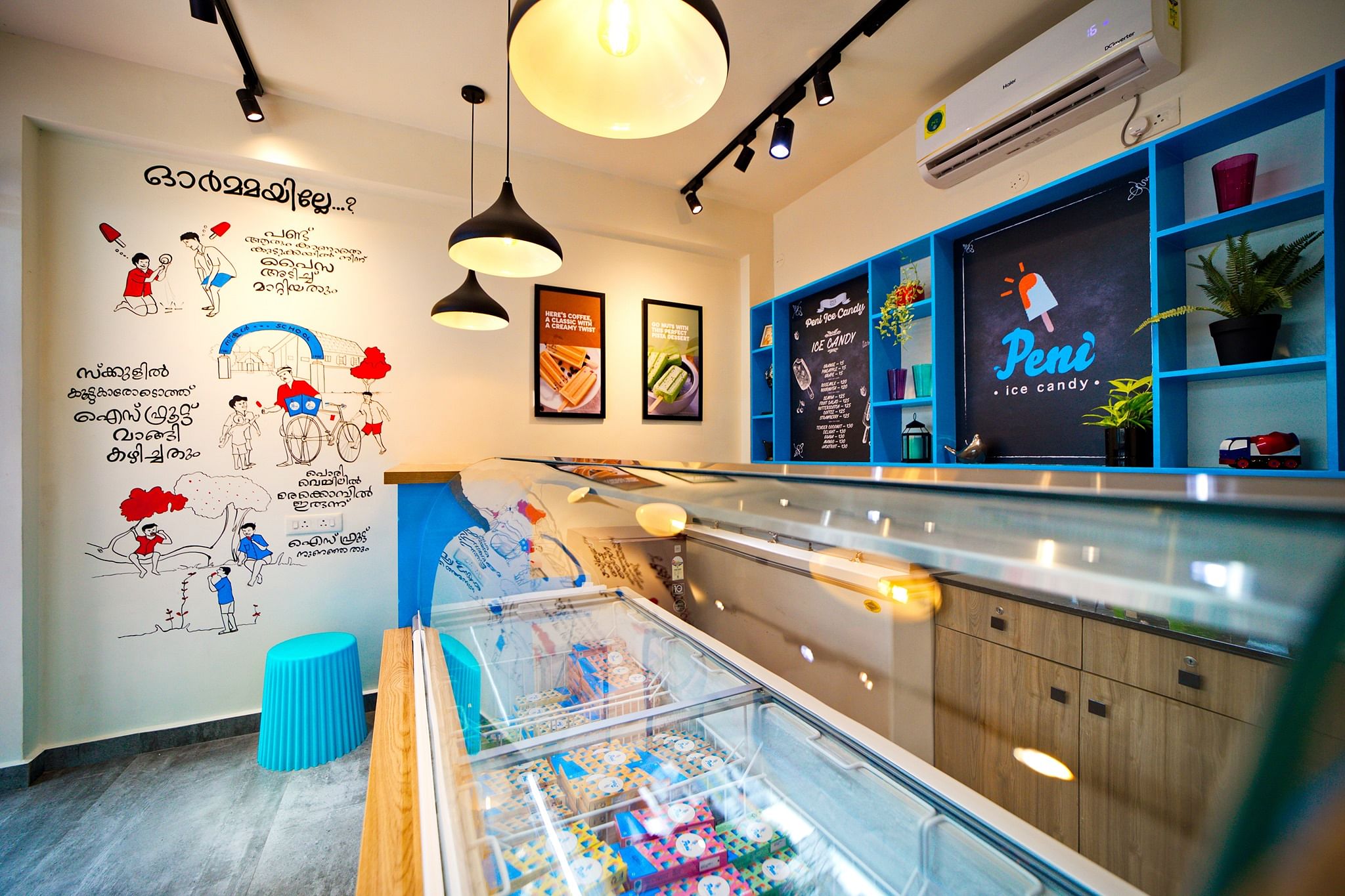
But Francis is reluctant to give credit to the ads for sales. It was merely a post-Covid-19 boom, he said. While he didn’t disclose the brand’s marketing budget, he added that Skei had a turnover of Rs 223 crore in 2023.
According to MarkNtel Advisors, the Indian ice cream market was valued above $3 billion in 2023 and is further projected to grow at a compound annual growth rate of 13.49 per cent from 2024 to 2030.
Now, everyone has to do ads. It doesn’t matter if you have the money to do it or not
– John Francis, Director, Skei
The Kerala ice cream industry has now matured, it’s slowly moving beyond just ads to the taste of the product.
“Kerala is an evolved ice cream market where there is high demand for novelties. The value per litre proposition is favourable for innovative and natural products,” said Basheer, who’s now the Growth Consultant and Expansion Specialist for Skei Ice Creams.
Also read: Hijab, halal, football, food—Kerala has a new film industry. It’s Malabar Pride
The power of local
The boom in consumption is the result of the availability of ice creams in every nook and corner of the state, say industry sources.
Rich And Tasty is one of the many examples. Based out of Kadirur town in Kannur, it was set up by Pattiam Social Service Society in March this year.
The ice cream has already become the locals’ choice, said Sanjay Sathyan, the venture’s production manager.
“The product has good quality and we are getting most of the sales through word-of-mouth publicity. The public’s trust towards cooperative societies is helping us as well,” he said.
He added that they’re thinking of setting up one more parlour in Thalassery and employing more people.
“In Kerala, many people consume the product based on the ads. Now there has been a small change where people buy the product based on just the taste, which is helping the smaller brands too,” said Libin.
The ice cream unit has 12 employees and produces six flavours— vanilla, chocolate, pista, butterscotch, strawberry, mango, and tender coconut. Vanilla is their best seller. They also have popsicles, with a wider variety of flavours. The prices start at Rs 10 for a 50 ml cup. Their most expensive offering is a four-litre pack for Rs 780. It’s mostly sold through their parlour in Kadirur and 15 other distributors, who service nearby areas.
“Kerala is thickly populated. If you look at other states, between one village and another there is a vast expanse of land, Kerala is not like that. There are many shops in a close distance. So, population distribution and urbanisation are very different here, which makes distribution easier logistically,” said Francis. He added that the margins given to the distributors by homegrown brands have always been higher compared to other MNCs, who haven’t been able to penetrate the market.
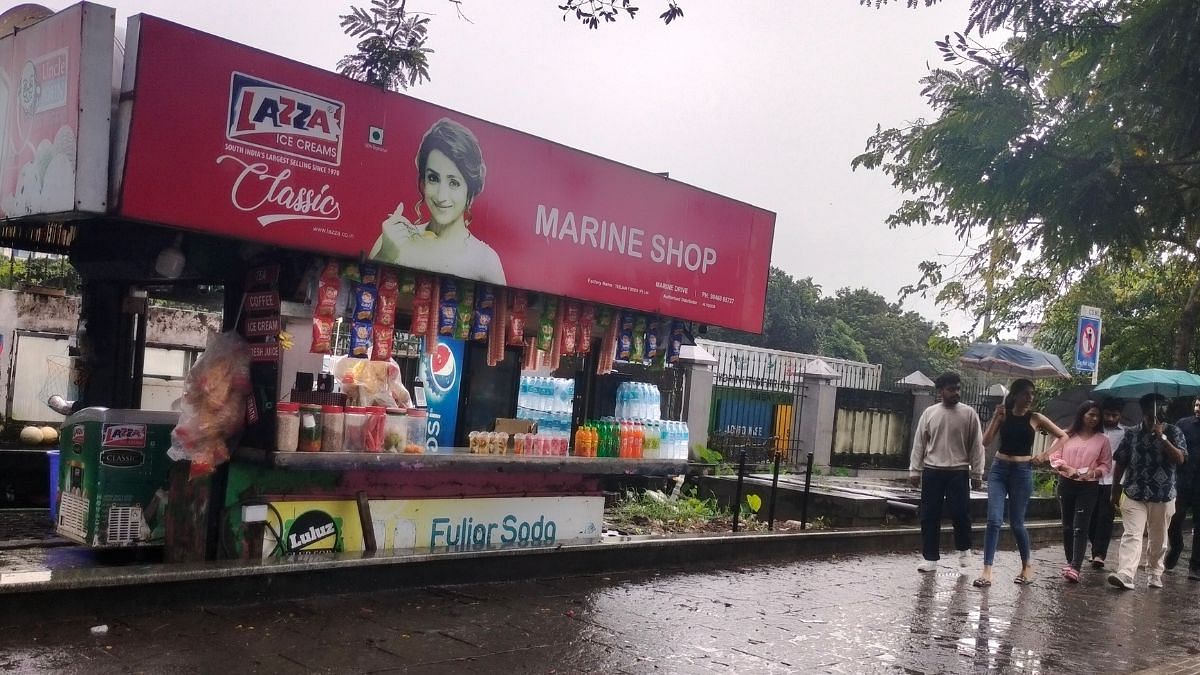
And new innovations are attempting to fix last-mile delivery too. In 2022, Rahul, a Kochi-based pulmonologist, launched SuperJoe—a multi-brand ice cream delivery app.
It took him one year to design the delivery bag, which can hold products at -18 degrees Celsius.
Currently operational only in Kochi, they’re planning to expand to Alappuzha, Thrissur, Thiruvananthapuram, and even Karnataka’s Mangaluru. A multi-brand ice cream parlour in Kochi is also on the cards.
Also read: A Hyderabad company putting Indian cacao beans on world map. With scientists-farmers combo
Price wars
Abner Mathew started Shwey’s from his house. It was a lockdown hobby, which quickly turned into a manufacturing unit and a physical shop.
While he has not started making profits, he has hit the break-even point. Which has aided the quick growth and expansion. It’s proof that the ice cream business is an attractive one.
But according to Basheer none of the new brands are making profits.
“Many of them are spending on branding and marketing without considering the profitability as they are trying to increase the market share. This is making their financials vulnerable. Few of them are struggling to survive,” he said.
Siddique added that many started ventures with the assumption that manufacturers were making as much profit as the distributors or that they could make profits selling frozen desserts in the name of ice creams.
However, the rising number of ice cream companies created a price war among manufacturers making the business non-viable for small-scale business owners.
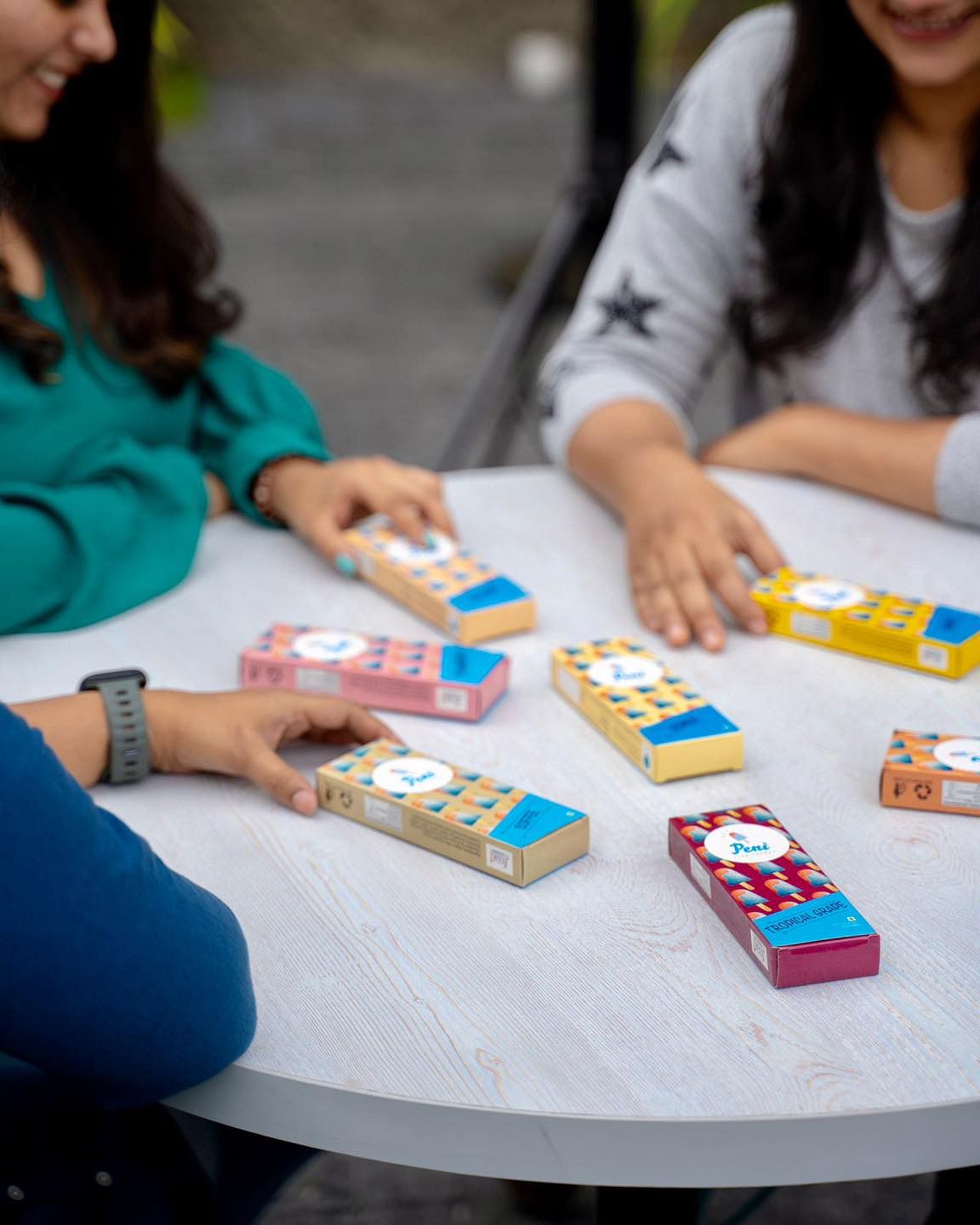
“The quality of the product was getting compromised. So we came up with an association to create standard pricing,” Siddique said, adding that the association, which has only small-scale manufacturers, has nearly 100 registered members.
But popsicle brands are still seen as a profitable venture. Libin said that a minimum of 30 popsicle brands come up in the state yearly, most of them later foraying into the ice cream business too.
“Peni introduced the concept of popsicles. When you get a scoop of ice cream for Rs 80, they bring the same taste into a popsicle form for Rs 40,” he said.
One of the newest popsicle brands, Scandy, set up shop in March 2024. They already have 10 outlets across Ernakulam. Their popsicles start at Rs 3 and go up to Rs 40.
“If you invest Rs 5 lakh, you can start one unit in Kerala. And some of them even do nearly 60 flavours,” Libin said.
(Edited by Theres Sudeep)




